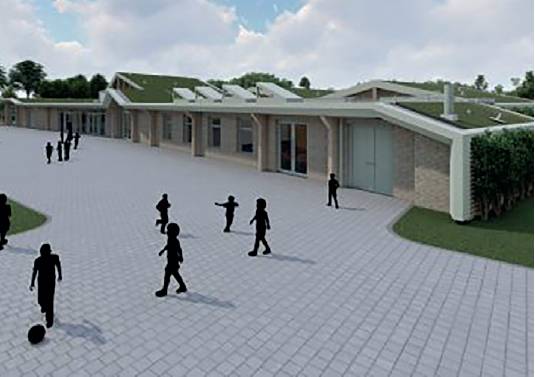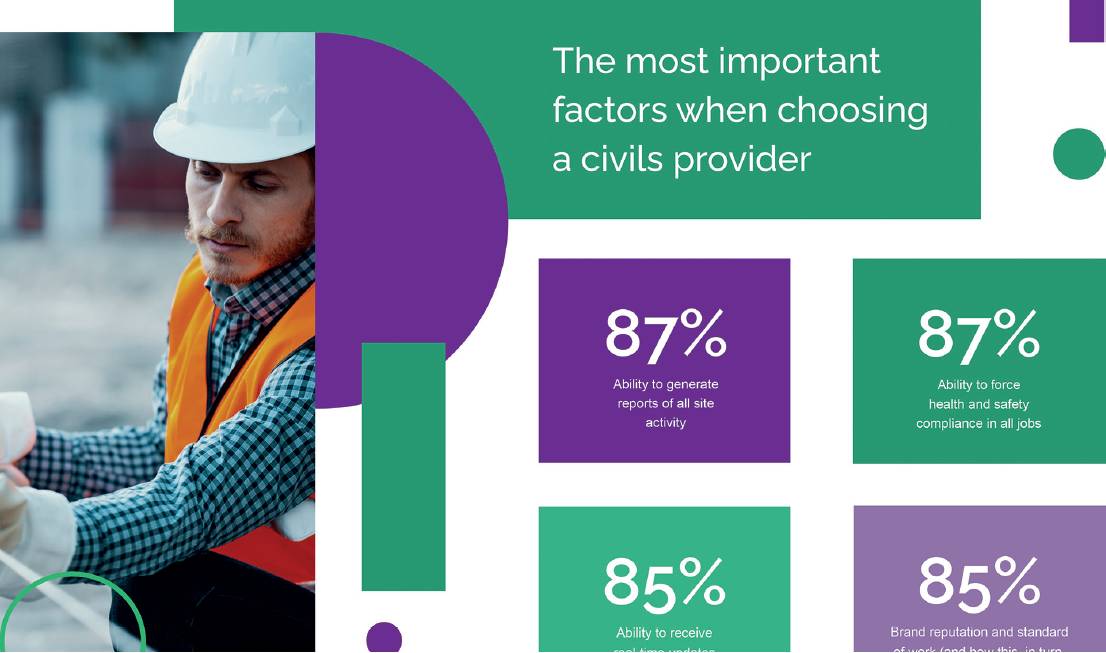Five royal London landmarks tranformed as part of the Queen’s platinum jubilee

Tower Bridge using lidar technology. Credit: GeoSLAM
GeoSLAM has marked the Queen’s Platinum Jubilee by recreating five iconic Royal London landmarks in 3D using lidar technology.
Tourists and revellers can now see famous sites like Buckingham Palace, St. Paul’s Cathedral, the Tower of London, Tower Bridge and Trafalgar Square up close thanks to their handheld ZEB Horizon device.
It sees point cloud data visualisations captured of each landmark, recreating the iconic buildings in 3D-form.
Fly-through videos have been made which take viewers on a tour of each structure’s inner-workings.
It includes details of the Royal residence’s grand entrance which were captured, on foot, in just 23-minutes and processed in GeoSLAM’s processing software, GeoSLAM Connect. This July will see the GeoSLAM team embark on the Big Slam Tour of the UK, travelling the length and breadth of the UK to digitally scan iconic British monuments.
To check out the current videos for Buckingham Palace, visit https://bit.ly/3zHflxZ.
For Tower Bridge, visit https://bit.ly/3Hu65iA.

VolkerFitzpatrick awarded a contract for new pre-preparatory buildings at Haberdashers’ Boys’ School
VolkerFitzpatrick has recently won a £7m contract to deliver an education facility for Haberdashers’ Boys’ School in Elstree, Hertfordshire.
Founded in 1690 and situated in the grounds of Aldenham House, the school has undergone extensive renovation over the past decade.
It is VolkerFitzpatrick’s second project currently in development at the school with the latest involving a cross-laminated timber frame construction designed to maximise pupil learning for those aged between reception, years one and two.
Single storey, it is a earth-sheltered structure that will blend into the surrounding landscape with circulation areas that double as breakout spaces to encourage collaborative working between the classes.
Year-long geotechnical investigation of a new light rail transit tunnel in Texas completed
Fugro has recently completed a year-long geotechnical investigation for infrastructure solutions firm HNTB to support the safe design of a new light rail transit tunnel in downtown Austin in Texas. The tunnel is a key part of HNTB’s work for the Capital Metropolitan Transportation Authority (CapMetro), Austin Transit Partnership (ATP) and the city of Austin on the larger Blue Line Corridor project, which aims to ease traffic congestion and support sustainable population and economic growth in the city.
To understand and mitigate potential ground risk in the tunnel design, Fugro characterised the site’s soil structure using a variety of geotechnical and geophysical methods. These included acquiring, sampling, imaging and testing geotechnical borings; installing groundwater monitoring wells; and performing specialised laboratory testing on selected rock samples.

Picture credit: CapMetro/ATP
ESA Discovery accelerates AI in space
The European Space Agency (ESA) Discovery is funding 12 projects that will explore the potential of applying the latest developments in artificial intelligence (AI) and advanced computing paradigms to make satellites more reactive, agile and autonomous. This could generate new practical applications that support life on Earth and our exploration of other planets. This latest step began in October 2021, when the discovery element of ESA’s Basic Activities – working together with ›-lab and ESA’s new commercialisation department – launched a call for ideas on how space systems can be made more powerful using novel computing techniques and AI. The most interesting ideas have now been selected for funding.
Applying modern computing techniques, such as, processing data directly on board satellites, could transform space activities and the space economy in the coming decade. The ability to make satellites smarter offers significant benefits for future space missions and business models.
The 12 projects are being funded by ESA’s discovery element; each will run for six months with a budget of €100,000. All are financed using the ESA Initial Support for Innovation (EISI) scheme, which focuses on knowledge and skill development rather than achieving specific results.
Civil engineering subcontractors given warning by MyMobileWorkers research

Civil engineering subcontractors have been warned that they risk missing out on contracts if they don’t adopt real-time digital job reporting systems by independent research for MyMobileWorkers. The study reveals concerns about the ability of subcontractors to provide accurate job data, demonstrate regulatory compliance and prove they have delivered high-quality work.
When asked about the overall quality of data from subcontractors using paper job sheets, one in five said it was unreliable, and 45% said they were concerned this group of subcontractors couldn’t produce an audit trail. Respondents were worried about the impact these factors could have on their businesses. Significant compliance-related concerns included damaged brand reputation (55%), risk of fines or financial penalties (41%), and the potential to lose the contract or further business (50%).
The research also highlights the top challenges civil engineering companies face when working with subcontractors relate to information accuracy and demonstrable compliance. To find the full report, visit: www.mymobileworkers.com/civil-engineering-report.
Bentley Education’s digital twin design challenge winners reimagine apartment living
The contest invited students from age 12-25 years to combine their imagination and creativity and explore infrastructure digital twins, providing an opportunity to reimagine a real-world structure designed with the popular Minecraft video game and Bentley’s iTwin technology. The contest awarded two prizes: a judge’s choice winner with a prize of USD $5,000 and a people’s choice winner with a prize of USD $2,000. The second-place projects in each category received USD $1,000. Bentley Systems’ chief success officer, Katriona Lord-Levins, said: “We were amazed by the creativity the students demonstrated with their projects and by how incredibly thoughtful and detailed they were. Some of the projects addressed the problems and challenges that are important for the future of infrastructure. The talent displayed gives us a great deal of confidence that the future of infrastructure is in good hands. Our younger generations are thinking ahead about the challenges we will need to face to improve the world.”

In brief:
- The Geospatial World Awards has recognised Skanska with a technology innovation award in construction and engineering. Skanska won the award for Skanska GeoBIM, a geospatial digital platform that integrates a geographic information system (GIS) with building information modelling (BIM) data from a project.
- Ashtead Technology has joined The Survey Association (TSA) as a supplier of rental equipment to the survey and inspection industry.
- KOREC Group CEO, Alan Browne, has been named on the EY Ireland entrepreneur of the year shortlist for 2022. Alan’s nomination is for ‘established entrepreneur’ with the overall winner, who will also be a global finalist, announced in November.
- The VolkerFitzpatrick team building the new Brent Cross West station have taken a step closer to finishing the project by manoeuvring the station’s platform escalators and canopies into place. An opening date will be announced later in the year.
- The collapse of civil engineering firm, Roadbridge UK, has resulted in unsecured creditors bearing a £22.5m hit. Two firms are owed more than £1m an administrator’s report has revealed, with dozens more owed £100k or more.
- The Office of Public Works (OPW) has awarded Fugro a contract to acquire, process and publish lidar geodata of Ireland’s west and north coasts. The baseline survey will deliver a 3D elevation model to support Ireland’s coastal resilience strategy by identifying areas at current or future risk of coastal change and flooding.
- BAM Nuttall has trialled the integrated Trimble and Boston Dynamics integrated robot on a large and remote construction site in Shetland - utilising a private stand-alone 5G network for remote control – in the first use case of its kind.
- Construction technology provider Causeway Technologies has acquired Yotta, a global provider of connected asset management software and services, from AIM-listed Oxford Metrics plc. The acquisition of Yotta marks another step on Causeway’s journey to digitise the processes that underpin the construction and maintenance of infrastructure assets.
- An underground station at the Manchester terminus of HS2 high-speed railway line has been rejected due to its estimated price tag of £5bn, transport bosses have told MPs.
- Unsecured creditors of the Bristol-based NNCM, which delivered infrastructure and non-infrastructure projects for 10 of the largest national water sector companies, are owed £115m – nearly double what it was previously thought. Formerly known as North Midland Construction, NMCN’s portfolio of infrastructure contracts and associated assets has now been acquired by Keltbray.